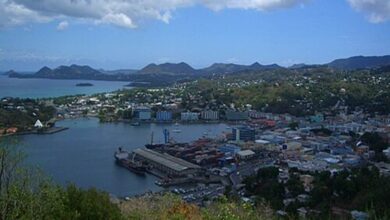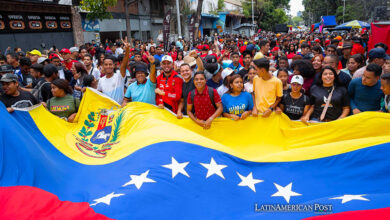Fortified Neighborhoods Surge as Haiti’s Grassroots Defense Against Unprecedented Violence

In Haiti’s capital, communities have erected massive barriers to fend off armed groups amid soaring violence since 2018, reflecting a desperate measure for safety in a country grappling with lawlessness and the absence of state protection.
In the labyrinthine streets of Puerto Príncipe’s metropolitan area, residents are taking matters into their own hands. Faced with a surge of violence and territorial expansion by armed gangs, neighborhoods have started to erect massive barriers at their entrances. This grassroots fortification effort aims to prevent invasions or attacks in a country wrestling with unprecedented levels of insecurity since 2018.
Almost a year ago, in April 2023, the neighborhood of Turgeau, just a few kilometers from the National Palace, witnessed a brutal attack by armed groups looking to take control. That day, at least a dozen alleged bandits were killed and subsequently burned by the outraged community. Since then, Turgeau, like many others, has been on high alert amidst a national crisis exacerbated by gang violence, which now dominates 80% of the capital.
“We’ve put up these barriers due to the lack of security. The bandits have already tried to take over the area, but we’ve repelled them. We’re on watch,” a Turgeau resident told EFE near one of the metal barricades.
A Response to State Inaction
The rise of such defensive measures speaks volumes about the National Police’s inability to provide protection. “If the Police existed, we wouldn’t be going through what we are now. The Police are a legal force that lets illegal forces increasingly take over territory,” remarked a pessimistic young resident, highlighting the community’s dim view of the future and their hopes pinned on a UN-authorized multinational mission to assist the Police.
Turgeau is not alone in its defensive strategy. Journalists from EFE have identified at least a dozen barriers across various neighborhoods in Puerto Príncipe, including Tabarre, Delmas, and Pétion-Ville, effectively transforming these areas into fortresses where every entry and exit is scrutinized.
The Urbanism of Fear
Since 2018, Haiti has faced a meteoric rise in insecurity, characterized by an increase in kidnappings, armed attacks, thefts, rapes, and gang conflicts. This dire situation has forced thousands to flee their birthplaces for makeshift camps under inhumane conditions.
These security measures are particularly prevalent in fragile states like Haiti, where the government lacks the capacity or will to meet the population’s needs or ensure territorial sovereignty. “These are not ‘lost territories’ but rather gray areas, spaces beyond the state’s control,” explains Djems Olivier, a university professor.
The construction of these barriers, funded by neighborhood residents, varies from community-led vigilance brigades to hiring private security firms for protection. This shift towards fortified living spaces is a stark indicator of the “urbanism of fear,” a concept that has evolved from gated communities inhabited by the wealthy to include now impoverished areas adopting similar strategies to combat the spiral of violence.
A Community’s Stand Against Violence
The phenomenon of self-fortification sheds light on the broader context of Latin America’s struggle with violence and insecurity. Similar tactics have been observed in countries like Brazil, Colombia, and Mexico, where communities also resort to self-defense mechanisms in the face of gang violence and state absence.
The situation is particularly acute in Haiti due to the state’s pronounced absence across the country. Notables, grassroots groups, and NGOs often step in to fill the void left by the government, creating a patchwork of authority and protection mechanisms in urban and rural areas alike.
The practice of lynching, as seen in the Bwa Kale movement, underscores the population’s desperation for justice and order in the absence of effective law enforcement, highlighting a grim reality where communities are left to fend for themselves against the backdrop of expanding territorial control by gangs.
Also read: Global Coalition Rallies to Restore Peace in Haiti Amid Gang Crisis: A Latin American Perspective
This grassroots fortification of neighborhoods in Haiti is not just a testament to the resilience and ingenuity of its people but also a damning indictment of a failing state apparatus. It’s a stark reminder of the urgent need for comprehensive security and governance reforms to restore peace and stability in Haiti and other affected regions in Latin America.





